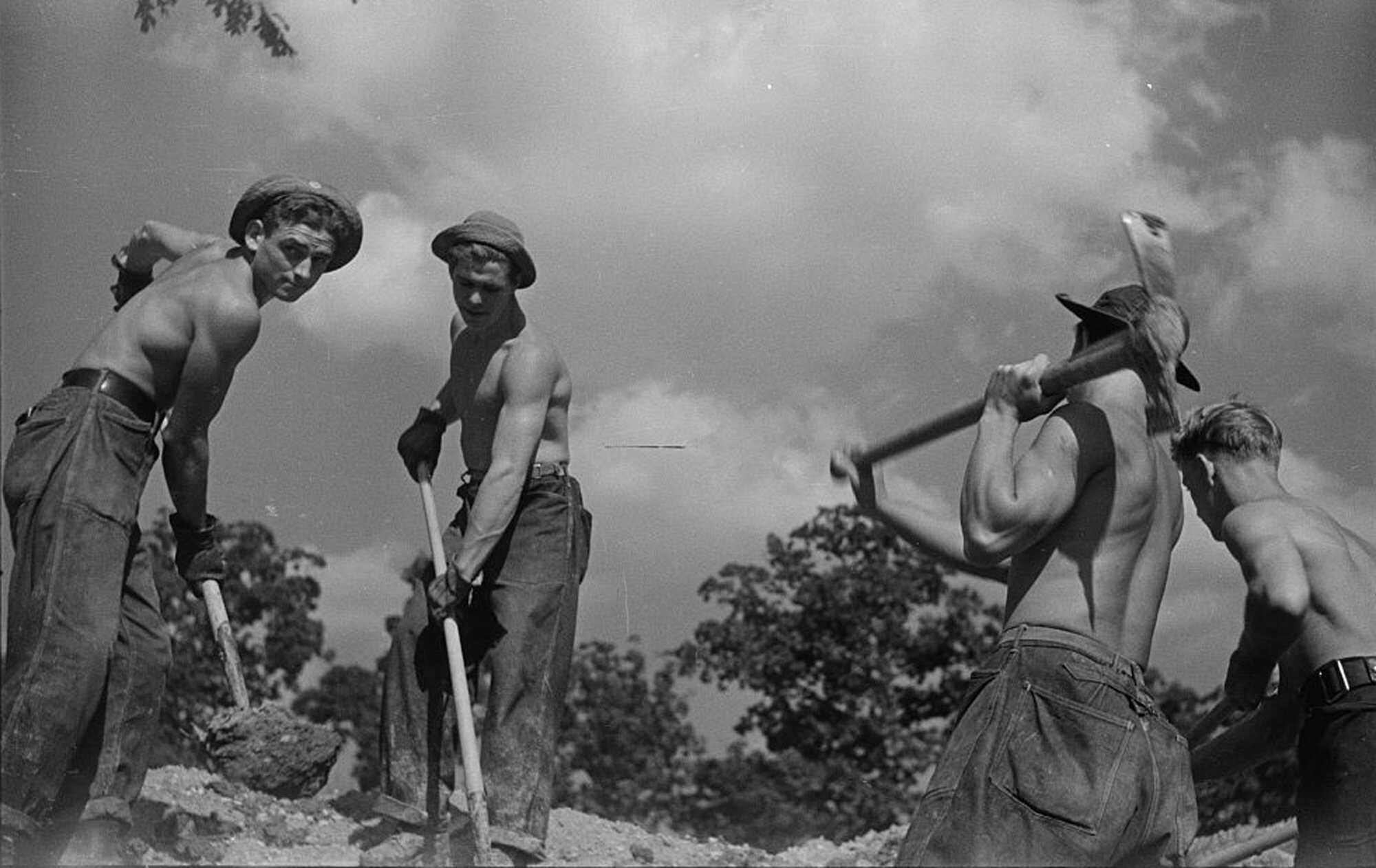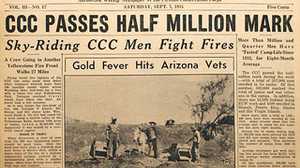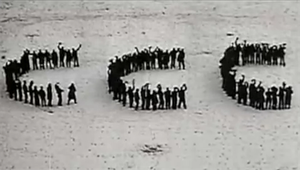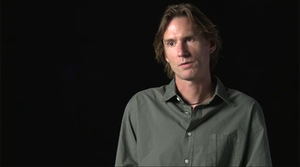Teacher's Guide
As one of the most successful programs of President Roosevelt’s New Deal, The Civilian Conservation Corps was an integral part of the American economic recovery of the 1930s. Explore the goals and successes of the CCC, and debate whether such a program might be appropriate today. Discuss what the CCC did for America’s youth and culture. Research CCC camp locations and find projects that are still in use in your area.

Five lesson plans are outlined on the following pages of this Teacher’s Guide, each complete with its own set of tasks and resources.
Lesson Plan #1: The CCC - A Modern Solution?
Introduction:
Enacted during the first days of the Roosevelt administration, the Civilian Conservation Corps mobilized over three million young, unemployed Americans for nine years across the nation. This direct effort of the federal government initiated a series of programs to help pull individuals and the nation as a whole out of the Great Depression while developing infrastructure in local, state, and national parks that is still in place today. Opponents decried the increased involvement of the government in the economy while others praised its efforts. This balance is still hotly contested in modern times.
Length of Lesson: 4-6 Days
Objectives:
Examine social and economic need for the CCC
Review the program organization and its accomplishments
Analyze the overall success of the program. Did it meet or exceed its intended goals?
Consider whether a similar program would be appropriate in modern times
Tasks: Research the CCC using the following general categories:
Goals of the program
Organization of the program
Types of individuals helped
Daily life in the CCC
Types of projects developed
Opposition to the CCC
Economic success of the program
Based upon the research and the current economic needs of the nation, develop an argument for or against a modern version of the CCC.
Process
1. In small groups or individually, research the history of the CCC, using the categories in the Task list. Use the provided resources to complete this section.
2. After completing the research phase, analyze the findings and determine the overall success of the program based upon its goals.
3. Using the provided resources (see below), research the current economic status of the United States, including unemployment numbers and the potential need for conservation efforts.
4. Decide if a modern version of the CCC would be appropriate today and begin outlining arguments that support your position.
If the group advocates a modern program, include the following topics in your argument:
Lessons learned from the CCC
Elements of the program that make it worth replicating
Specific characteristics of the CCC that would have to be included in or excluded from a modern program
The types of projects that might be included today
Reasons why this type of program would benefit the nation
Potential role-out and timeline of the program
If the group rejects a modern program, include the following topics in your argument:
Explanations of specific problems seen with the CCC
Discussion of whether or not your group considers the original CCC unsuccessful, or just if a modern version would not work
Reasons why this type of program would not benefit the nation
Alternative solutions to help solve our economic issues
Using the outline, develop a presentation. Incorporate images, charts, and other visuals to bolster your argument. Utilize PowerPoint or other presentation options such as Goodle Docs, Slide, Rcket, Prezi etc.
Present your argument to the class.
Discuss class findings.
Extension Idea: Expand this to multiple New Deal programs.
Resources
Watchthe film he Civilian Conservation Corps
A CCC Timeline
A 1933 Time Magazine article introducing the newly-formed CCC, Rizzo Goes to Work
Legacy of the CCC — The CCC Legacy Project outlines the Corps’ lasting contributions
John A. Salmond’s cornerstone biography of the CCC, The Civilian Conservation Corp: A New Deal case Study, from the National Park Service website
Lesson Plan #2: Preparation for War
Introduction:
The Civilian Conservation Corps mobilized hundreds of thousands of men from all parts of the nation to protect and to provide greater access to America’s environment for the American people. When it was initially established, the Army was the only government agency capable of mobilizing such an effort, with reserve officers often acting as camp directors. The War Department worked closely with the Labor and Agricultural Departments to ensure that the camps maintained their civilian status and focus on conservation efforts. However, the basic structure of the camp and the day-to-day routines shared some characteristics with army life. When the Japanese attacked Pearl Harbor in 1941, many CCC participants claimed the program had prepared them well for the rigors of Army life in World War II.
Length of Lesson: 1-2 Days
Objectives:
Examine life in the CCC and compare life in the camps to life in the military.
Determine how extensively the CCC prepared men for boot camp and military life at the start of World War II.
Tasks:
Compare life in the CCC in the 1930s with World War II boot camp experiences described in the provided resources.
Discuss the value of the CCC in helping the United States prepare for war.
Process:
As a class or in small groups, show the video segments and review the provided links.
Create a Venn Diagram and make a comparison between life in the CCC and life in the military in World War II. Consider the following questions:
How important was work ethic?
What did day-to-day life look like for someone in the CCC or in the military?
What were the differences in living conditions?
How was discipline handled?
What types of work were performed?
Discuss the results as a class and evaluate the impact of the CCC on the nation’s preparation for war.
Resources:
Watch online The Civilian Conservation Corps (Chapter 7, A Legacy of Change, includes the impact of the CCC)
Daily Life in the CCC — former CCC enrollee Paul Mathews recalls life in his Pennsylvania camp
National Park Service book chapter, A Day in the CCC.
1940 article from American Forests, The Civilian Conservation Corps and National Defense — CCCDirector James. J. McEntee appraises the program’s potential contributions to national security
Recruit Training in WWII— A comprehensive look at the WWII recruit training experience
Boot camp at the Great Lakes Naval Station— WWII Navy veteran R. Fischer remembers boot camp
Lesson Plan #3: Race in the CCC
Introduction:
The Civilian Conservation Corps opened its programs to all racial groups within the United States. The initial legislation that created the CCC even included an anti-discrimination clause. While minority groups faced societal racism both in and out of the CCC, they actively contributed to the many successful projects across the country.
Length of Lesson: 1-2 Days
Objective:
Discuss the treatment of non-white CCC workers and whether the CCC could have had any impact on the impending Civil Rights movement.
Tasks:
Create a chart outlining the contributions and accomplishments of minority enrollees and policy changes regarding their treatment.
Analyze the implications of the information in the chart and consider the legacy of the CCC in the context of the racial discrimination prevalent at the time.
Process:
Create a chart with three major sections: accomplishments, treatment, and policy changes.
Watch the video segments and review the provided resources, adding related items to the chart.
Discuss findings and answer the following questions as a class or individually:
How was the anti-discrimination clause applied?
Why were camps segregated in 1935 after three years of mixed camps?
What was the greater social implication of this change?
How were African Americans treated within the CCC camps?
Could the CCC and its policies have had any effect on the civil rights movement? Why or why not?
How were Hispanics and Native Americans treated in comparison to African Americans?
Resources:
Watch online The Civilian Conservation Corps (Chapter 5, CCC Projects and People, includes treatment of African Americans)
African Americans in the CCC— a collection of documents collated by the New Deal Network that explores the challenges African Americans faced in the CCC
1991 Forest & Conservation History article, African American Youth in the Program of the Civilian Conservation Corps in Californian — North Carolina A&T State University History Professor Olen Cole, Jr. discusses the role of African Americans in the CCC
National Park Service book chapter, The Selection of Negros — This chapter from John A. Salmond?s cornerstone biography of The Civilian Conservation Corps looks at racial segregation and discrimination in the camps
Lesson Plan #4: Mapping the CCC Camps
Introduction:
From 1933 to 1942, thousands of CCC camps housed an army of unemployed Americans working on conservation projects across all 48 states. From the development of more than 800 state parks to the fighting of forest fires to the creation of fisheries, these works have left an enduring legacy. Much of the infrastructure, including roads, trails and pipelines, remains in place and use today.
Length of Lesson: 3-5 Days
Objectives
Examine the CCC camps and projects within your community, state, or selected region.
Evaluate the importance of these projects to the community and the larger impact on the nation.
Tasks
Map camps and projects within your selected geographic area, including any relevant information and available images.
Discuss the importance of these projects to the area.
Process
Select a region or type of camp to research (e.g. your home state, or National or State Parks or forests).
Using the CCC Project map and the provided resources, select and research 10-15 specific projects or camp locations.
Plot the locations of your selections on a Google Map OR create a tour using EverLater, a Web site that utilizes Google Maps to track vacations.
For each project or camp, provide a description of the work, conditions, barriers, and other notable information. Additionally, analyze the short and long-term impact of the projects on the local community.
If anyone has visited any of the locations, include personal photos and descriptions of the CCC-built assets that remain in place.
Extension Ideas
Use a shared Google Map that allows the class to collectively compile CCC projects within a state or community.
Act as a tour guide and create a written or audio narration of the listed projects and camps.
Resources
CCC project maps
Camps by state — a list of CCC camp locations by state from the CCC Legacy Project
Distribution of Camps — a 1940 chart showing camps West of the Mississippi
John C. Paige’s book, posted online, details National Park projects by the CCC, The Civilian Conservation Crops and te National Park Service: A Administrative History.
CCC Information in Selected Locations
Colorado — from the Colorado State Archives
Connecticut — Author Marty Podskoch compiles stories, images, and videos from Connecticut?s CCC camps
Maine — from the Maine State Archives
Massachusetts — A brief look at the CCC in Massachusetts and how it inspired the creation of the Department of Conservation and Recreation
Michigan — Roger L. Rosentreter’s article, “Roosevelt’s Tree Army”, from the 1986 edition of “Michigan History Magazine”
Mt. Rainer National Park — a National Park Service article discussing the impact of the CCC on Mt. Rainier National Park
New York — official website of The New York State Civilian Conservation Corps Museum
Oregon — more about Oregon Public Broadcasting’s film Civilian Conservation Corps
Oregon — Silver Creek Falls — information about the Oregon State Archive?s exhibit “The Civilian Conservation Corps: Protecting Oregon’s Resources”
Pennsylvania — information, photos and maps from the PA Department of Conservation and Natural Resources
Texas — interviews with TX CCC veterans
Utah — San Juan High School’s collection of interviews and projects from southeastern Utah
Wyoming — a collection of photographs, an excerpt of camp newsletter, Big Piney Examiner, and a brief history of the CCC in Wyoming
Lesson Plan #5: Daily Life in the CCC
Introduction:
Young men from around the country joined the Civilian Conservation Corps to escape the vast unemployment caused by the Great Depression. These men moved throughout the nation to take part in the largest conservation effort the United States had ever seen. The experiences of these men, both before and during their time in the CCC, demonstrated the harsh economic times and the tremendous opportunities provided by the federal government.
Length of Lesson: 2-3 Days
Objectives:
Examine the lives of the CCC participants.
Consider how you might have viewed the experience if you were in the same situation.
Task:
Write a letter home or series of diary entries about life in a CCC camp, including details about a project and daily life. Include several photographs.
Extension Ideas:
Publish your letter in a blog or on Glodster. Include multiple entries.
Use Voice Thread to create a multimedia version of this project.
Process:
Use the provided resources to research life in the CCC camps. Limit your focus to two to three topics.
Find three or more images to accompany your letter or diary entry.
Write your letter or diary entry.
If possible, publish your project on a blog, a VoiceThread, or other digital medium. (If using VoiceThread, allow students to set up free accounts or consider an educational subscription. VoiceThread also has an FAQ section and tutorials available.)
Resources:
Watch the film The Civilian Conservation Corps (Chapter 4, Life in the CCC Camps, Chapter 6, Lasting Effects, includes information about life in the camp after work, and Chapter 5, CCC Projects and People)
The CCC Timeline
National Park Service book chapter, A Day in the CCC
Daily Life in the CCC — former CCC enrollee Paul Mathews recalls daily life in a Pennsylvania camp
CCC images from the Oregon State University Archives









